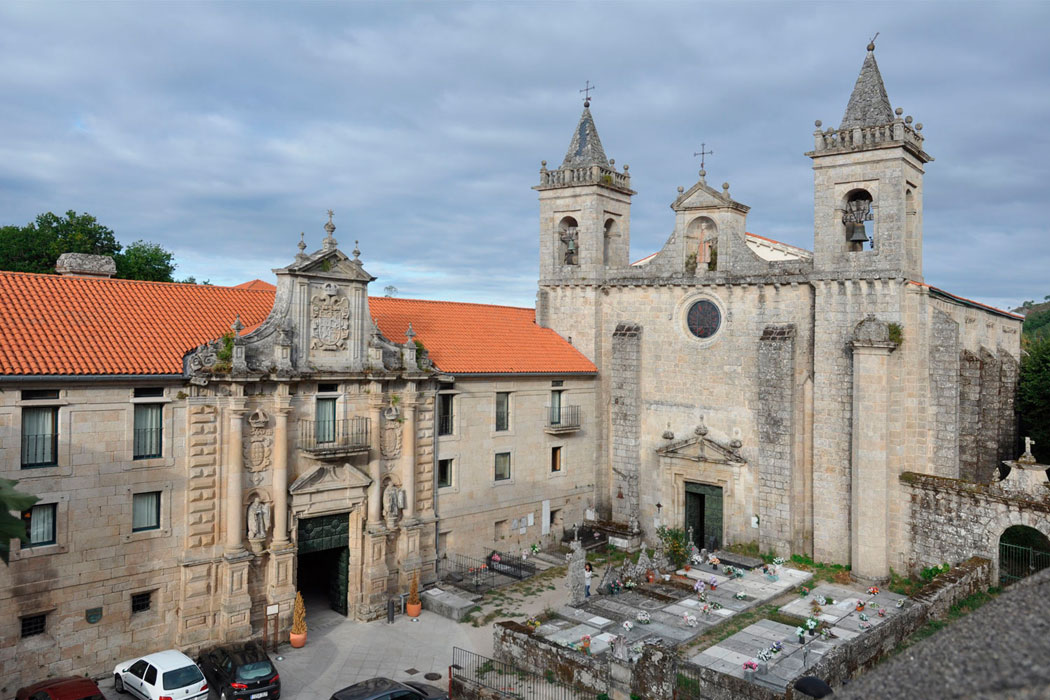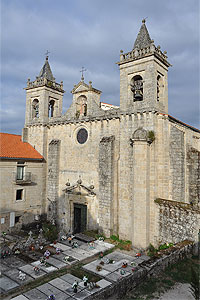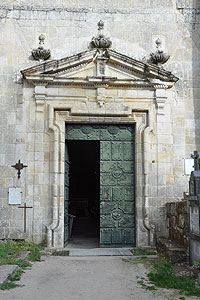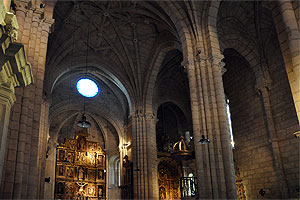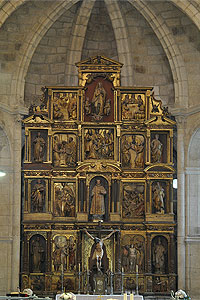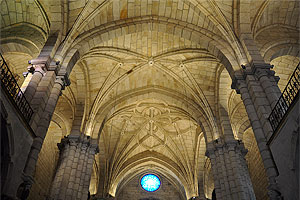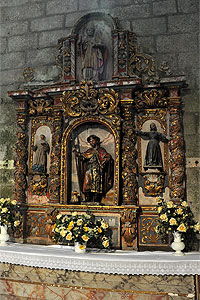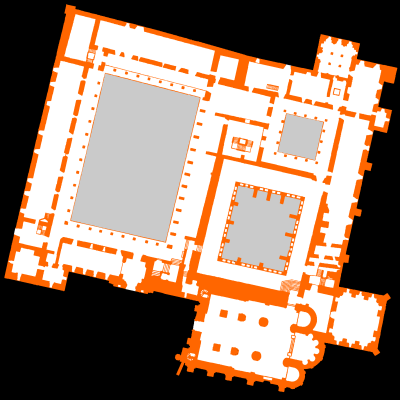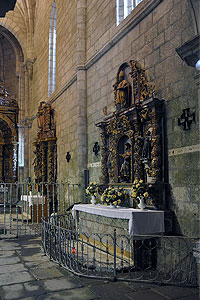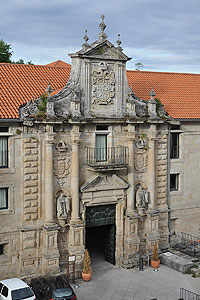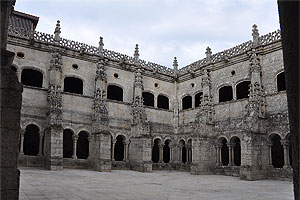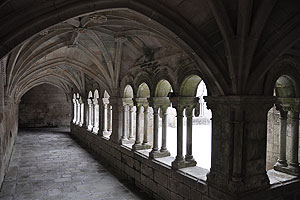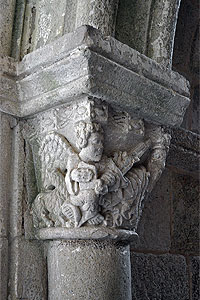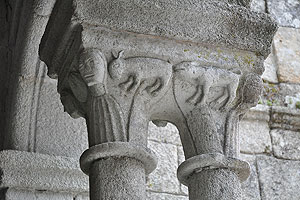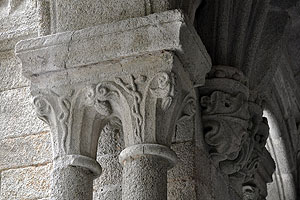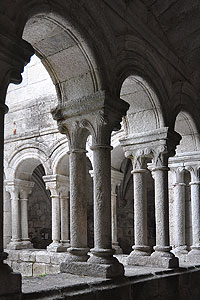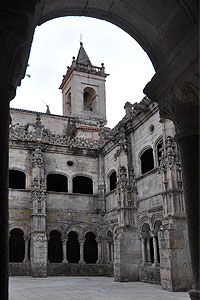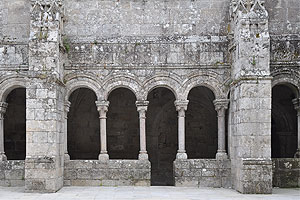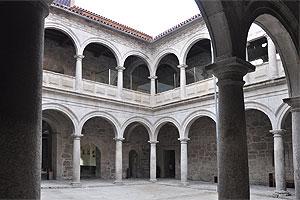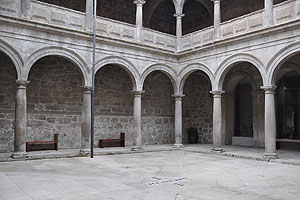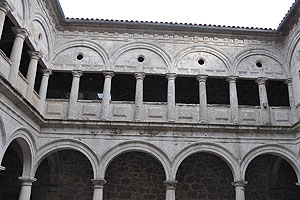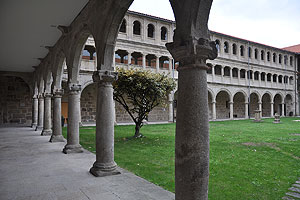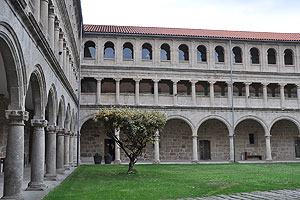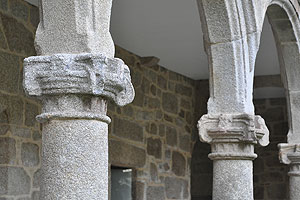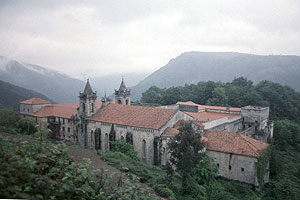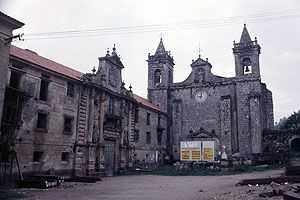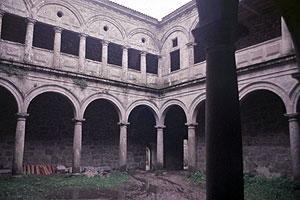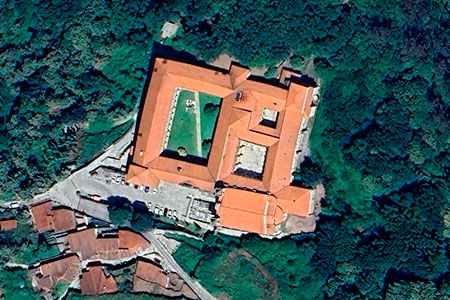Monastery of Santo Estevo de Ribas de Sil
S Stephani / Rivas del Sil / Ripas de Sili
(Nogueira de Ramuín, Ourense)
Information about the early history of the Monastery of Santo Estevo de Ribas de Sil is scarce. The first known document referencing it is a privilege granted by Ordoño II (921), which authorized Abbot Franquila († 959) to undertake reconstruction works due to its abandonment. This same Franquila would later become the abbot of the Monastery of Celanova.
According to tradition, this establishment may have been founded much earlier, in the 6th century, by Saint Martin of Braga, and it is also attributed with an eremitic origin. During the Middle Ages, the monastery gained prominence and accumulated a notable patrimony. It is known that, during the reign of King Alfonso VII (1126–1157), the abbey was sacked and much of its possessions were expropriated by Count Fernando de Trastámara due to a misunderstanding. This expropriation, carried out by the monarchy, underscores its importance during that period.
At this monastery, the Nine Holy Bishops were venerated, prelates who, around the 10th century, chose to retreat to the monastery as monks, likely fleeing the instability of the era. They were buried in the cloister, making the site a destination for pilgrimages and a center of devotion to their remains. In the 15th century, their tombs were dignified and moved from the Bishops’ Cloister, where they were originally located, to the interior of the church. In 2020, four of the rings belonging to those prelates were discovered. In the 13th century, the monastery underwent a period of decline that persisted, with varying intensity, until 1506, when it was incorporated into the Congregation of San Benito of Valladolid.
This new situation revitalized its economy and allowed for reconstruction and improvements to the monastic complex. In the 18th century, the monastery suffered a fire, but its greatest adversities came in the 19th century. During the Peninsular War (1809), it was plundered, and it also endured the effects of the Liberal Triennium. Finally, the expropriation of 1835 brought monastic life to an end. The monastery passed into private hands and suffered from looting. Later, the church regained its function as a parish, but the monastic buildings were largely neglected until the late 20th century. Starting in 1999, restoration works were undertaken to convert it into a hotel, which opened in 2004 and still serves this purpose.
The oldest part of the monastery is the church, a structure with three naves and three apses, built in the late 12th century and subject to later modifications. The main façade, facing west, dates to the 18th century. A notable stone altarpiece with figures of saints, dated around 1200, is preserved, as well as altarpieces from more modern periods. The monastic buildings are arranged around three cloisters. The oldest is the Bishops’ Cloister, built in memory of the holy bishops originally buried there. It dates to the 13th century and retains remnants of the ancient Romanesque chapter house. The second cloister, known as the Knights’ or Grand Cloister, has three stories. The third is smaller than the others.
- CASTIÑEIRAS GONZÁLEZ, Manuel (2006). San Estevo de Ribas de Sil revisitado: nuevos hallazgos e hipótesis sobre el monasterio medieval. Porta da aira, núm. 11
- FONTENLA, Concha (1998). La rehabilitación de San Esteban de Ribas del Sil. Análisis y consideraciones. Porta da aira, núm. 8
- FREIRE CAMANIEL, José (1998). El monacato gallego en la alta edad media, vol. II. La Corunya: Fund. Pedro Barrié de la Maza
- GARCÍA IGLESIAS, José Manuel; dir. (2004). La Ribeira Sacra. Esencia de espiritualidad en Galicia. Xunta de Galicia
- LORENZO ASPRES, Alberta (2017). Monumentos convertidos en hoteles: el sacrificio de la memoria arquitectónica. El caso de Santo Estevo de Ribas de Sil. Pasos Revista de Turismo y Patrimonio Cultural, núm. 15.3
- PÉREZ GONZÁLEZ, José María; dir. (2015). Enciclopedia del románico en Galicia. Ourense. Aguilar de Campoo: Fundación Santa María la Real
- PÉREZ RODRÍGUEZ, Francisco Javier (2008). Mosteiros de Galicia na Idade Media. Ourense: Deputación Provincial de Ourense
- SÁ BRAVO, Hipólito de (1972). El monacato en Galicia. Vol. 2. La Corunya: Librigal
- VARELA CAJIDE, Pablo (2017). Espacio y poder en la Edad Media gallega. La proyección territorial del Monasterio de Santo Estevo de Ribas de Sil (921-1300). Diversarum rerum, núm. 12
- YEPES, Antonio de (reed. 1960). Crónica General de la Orden de San Benito. Vol. II. Madrid: Atlas
- ZARAGOZA PASCUAL, Ernesto (2002). Abadologio del Monasterio de San Esteban de Ribas de Sil: siglos X-XIX. Compostellanum, vol. 47/3-4
